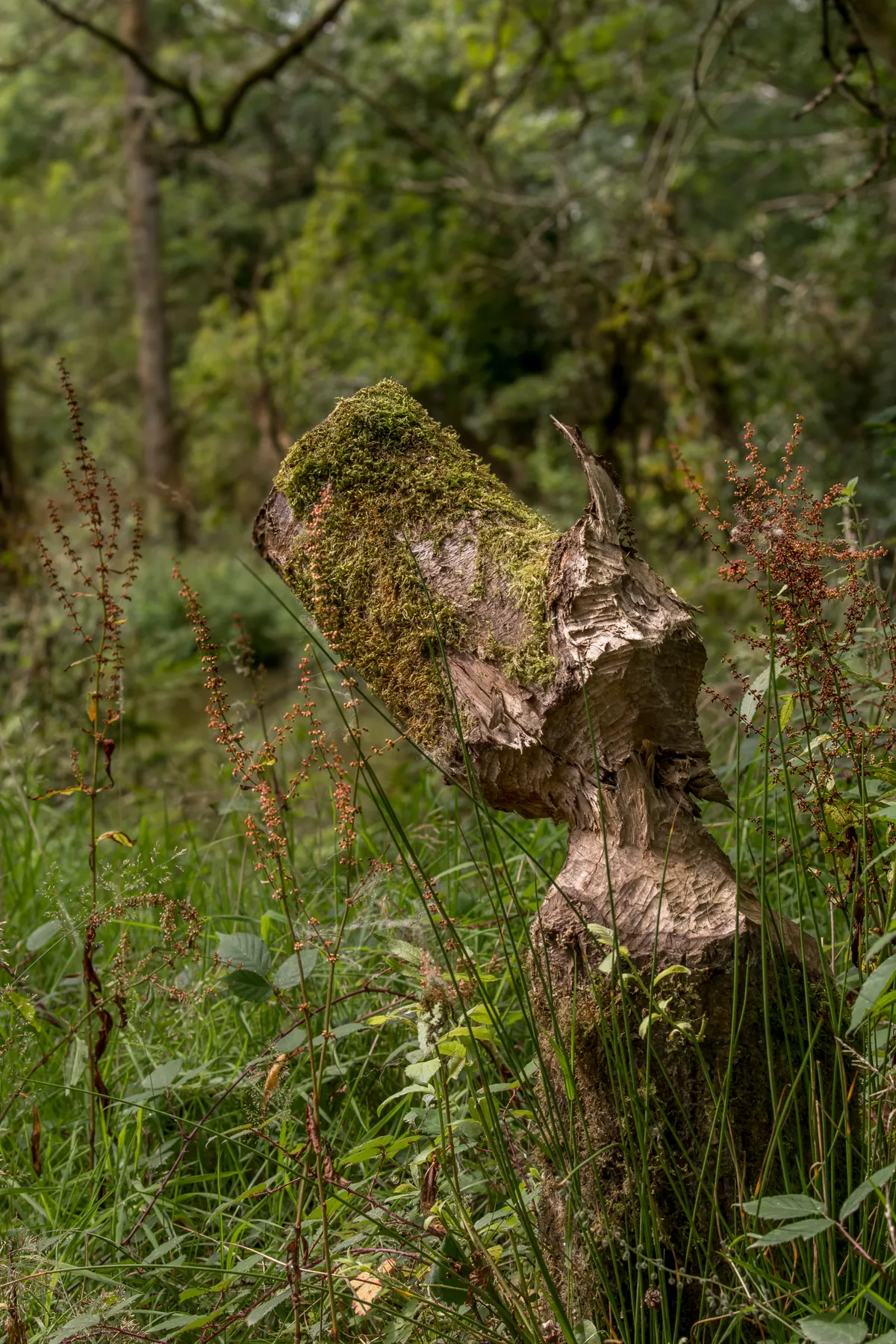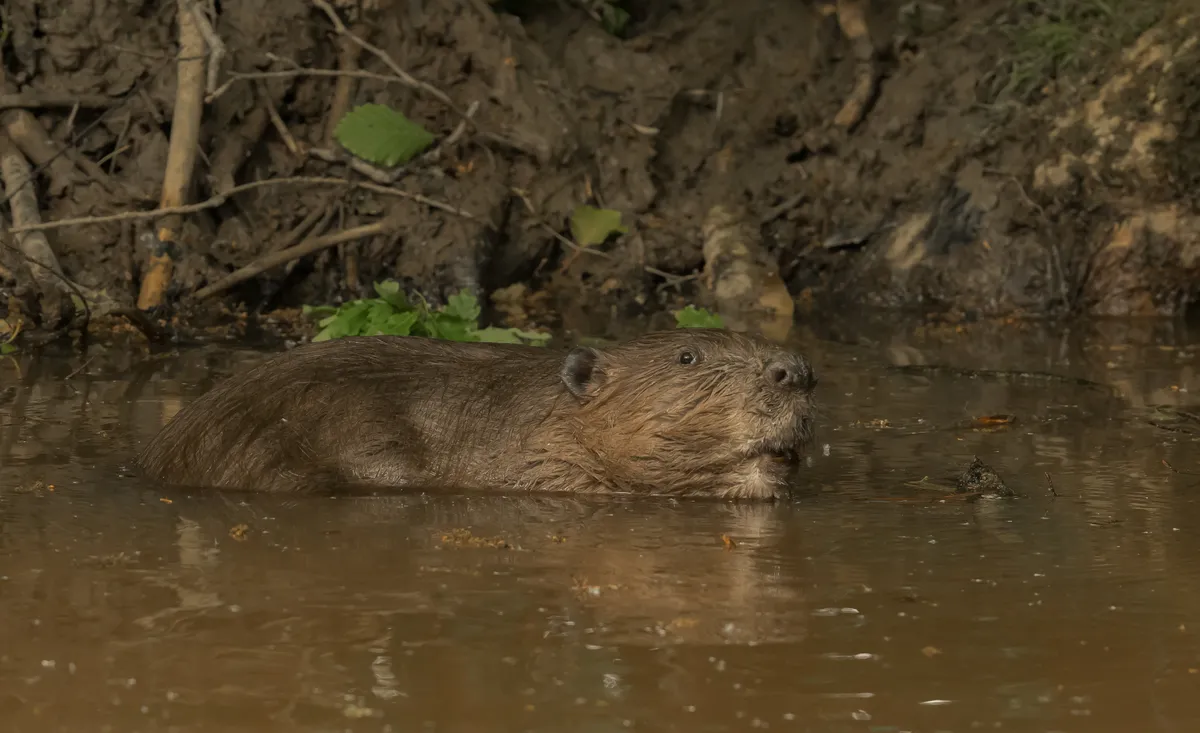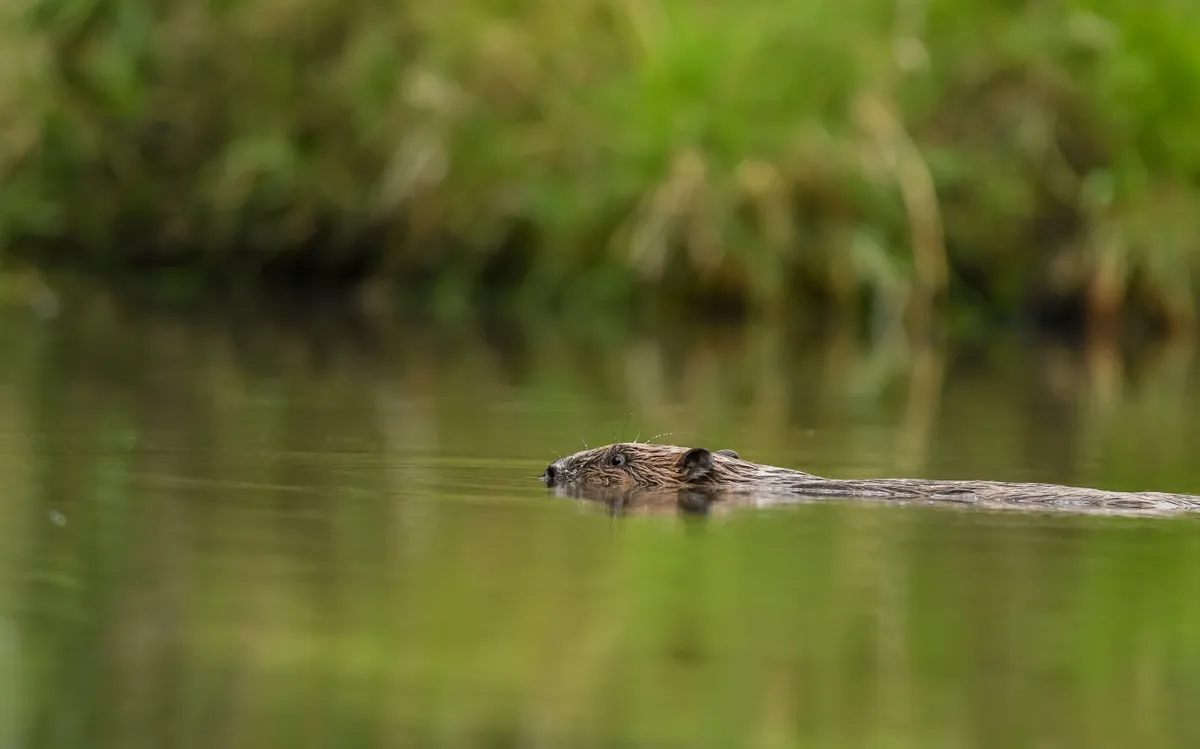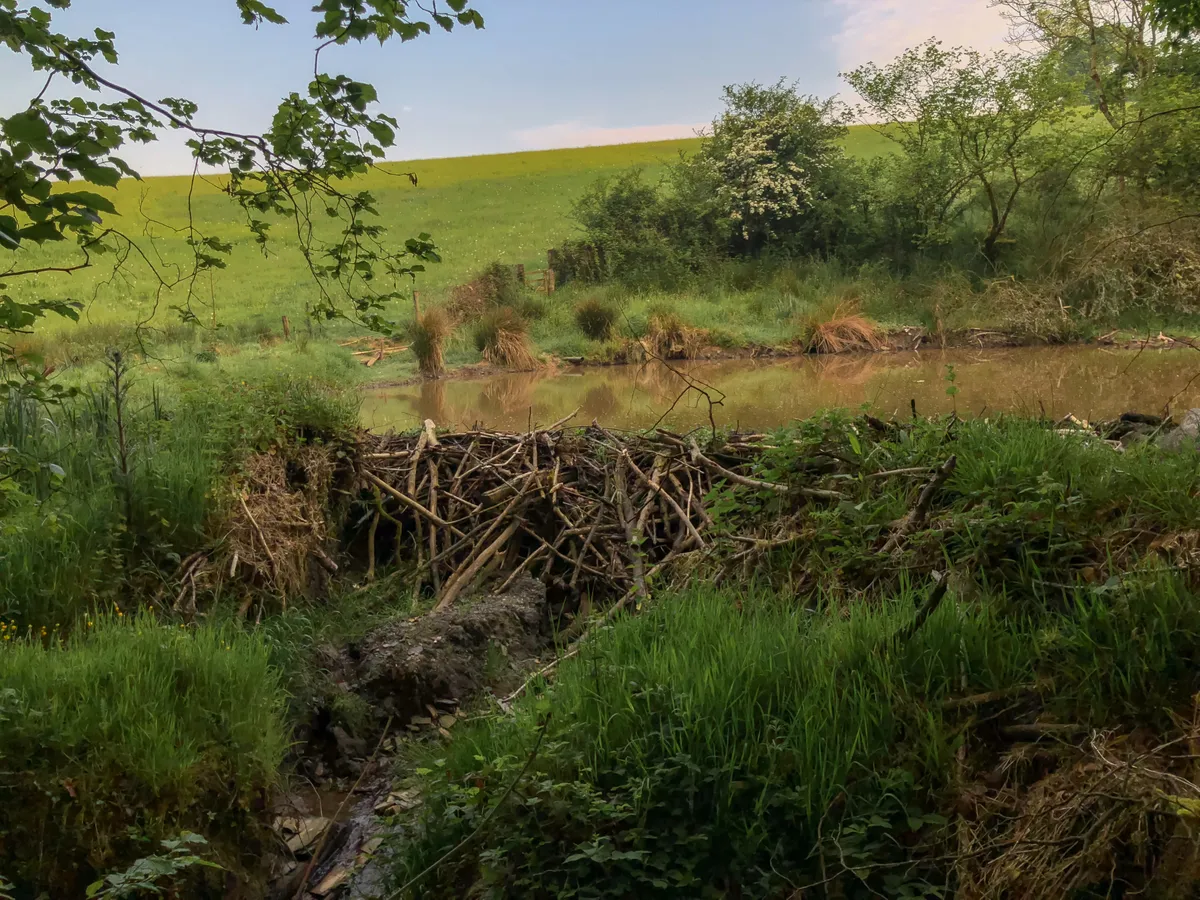10 August 2018 – mark the date. It’s when, on my fourth attempt to see beavers in the wild in the UK, I finally clapped eyes on one.
I was on the Coombeshead Estate on the Devon-Cornwall border with my wife and son, at the tail-end of the summer heatwave. I’d visited back in April during an incredibly wet weekend and drawn a blank.
But on this first evening conditions were perfect. It was warm and still and we slipped down into the woods just before dusk in the camo-clad company of photographer Kirsty Taylor . She went ahead and we followed as stealthily as we could.

The Coombeshead beavers have been at large since they escaped from a neighbouring farm in 2013. As I wrote in my previous article (July issue), they – some 25-30 are estimated to now live in the valley – have transformed the landscape, building dams on a tiny tributary of the River Carey, excavating pools and felling ash and alder trees.
What was previously a rather pathetic ditch masquerading as a waterway, was now a series of pools and marshes linked by faster-flowing stretches of water.
Like most areas of Britain, the dry summer had taken its toll on the landscape and Tina, who farms the estate, was already feeding her sheep winter hay as the grass had withered in the heat. The stream was a mere trickle whereas in April it was a torrent.
But where the beavers had worked, there were full pools of water. We past two large pools, smiling at the almost cartoon-like gnawed trees stumped and felled saplings.

A beaver can cut through a 15cm diameter trunk in 30 minutes Tina had told me. She and her husband Tony showed me a beaver skull with its preposterously long blade-like front teeth.

Kirsty reached a third, larger pool where there was a beaver lodge and instantly froze. She gestured to us to approach carefully and there, in the shallows at the foot of the bank in front of us, was a beaver.

It was motionless in the water – I’d have missed it without Kirsty’s sharp-eyes. It looked like a log. But then it moved and performed a gentle rolling dive into the brown water. The size of it – it was as big as our whippet.
And then there was nothing so we sat and watched the still brown water, willing another beaver to appear. Except that the water wasn’t still. Ripples kept breaking the surface – signs of fish feeding on insects.
After about 20 minutes, a strange bow-wave swept across the pool and then a head rose out of the water, followed by a long back – a cigar shape in the dusky water. Another beaver.

It patrolled the pool before suddenly arching its back and slapping its huge tail on the water surface – it was like a cannon going off – the beaver disappeared, spooked and having warned all of its family of potential danger. Nothing in the woods could have failed to hear that.
I saw beavers again a couple of times more that weekend but torrential rain replaced the sun and, as I’d discovered back in April, beavers don’t like rain. But the storm water gave me an opportunity to see the beavers’ engineering at work and just how much water their dams can hold.

Further on from the beaver lodge pool, a whole area of woodland seemed to fill up with water metres deep. True to their billing, the beavers were able to store water in these moderate uplands that would otherwise have rushed downstream, potentially causing flooding.
Here was water full of trout and invertebrate life that in turn supported bats, which thronged the dusk, and many species of birds. Tony said that earlier in July he’d seen thousands of damselflies on a single pond.
While I sat, a kingfisher perched in front of me while a heron felt confident enough to begin fishing just outside the beaver lodge. I have no doubt that none of this life would be here in summer without the beavers. The stream would be all but dry.
And I have to say, I enjoyed simply sitting by the water in those woods in the early morning waiting for beavers to appear when my family was asleep. I found it immensely soothing to switch off the phone and simply be in the moment, allowing the gentle browsing of sheep, the audible ripple of rising fish and the whisper of rain on leaves to wash over me.
See the Coombeshead beavers for yourself:
The beavers can be spotted in the grounds of Percys Hotel, which is on the Devon-Cornwall border, about six miles from Launceston. The hotel is owned and run by Tina and Tony Bricknell Webb, who will show you the best beaver-watching spots and have set up hides and trail cams so that you get as much action as possible.
As well as the beavers, there is a host of other wildlife – while the seaside is a 25 minute drive north to Bude.
Percy’s HotelCoombeshead Estate, Virginstow, Devon. EX21 5EA.
07553344371
To see more of Kirsty Taylor's photographs visit https://www.kirstytaylorphotography.com
